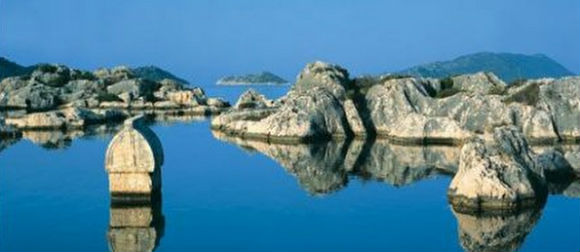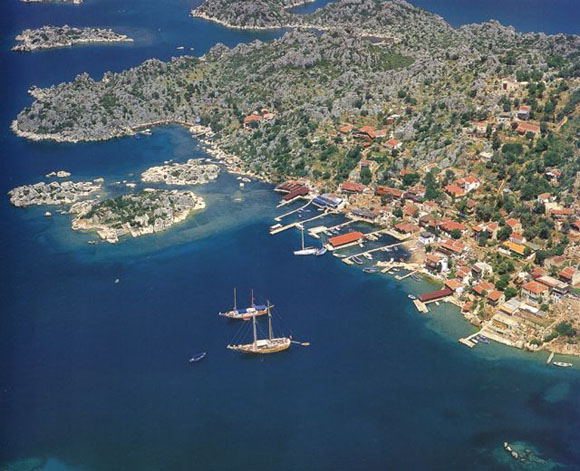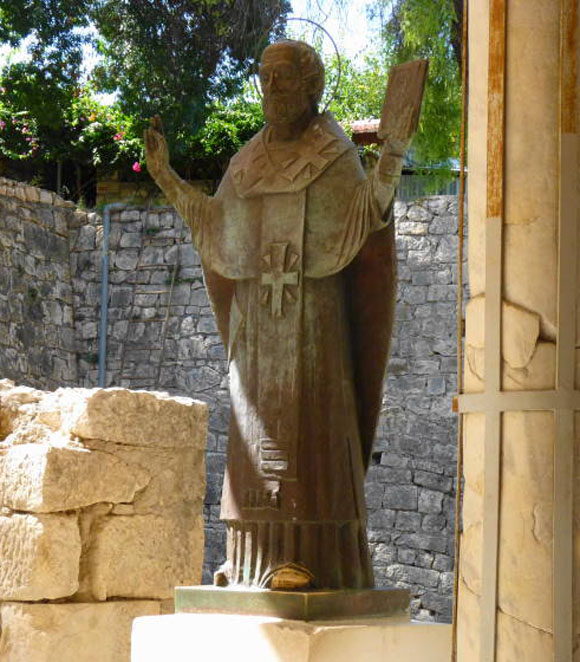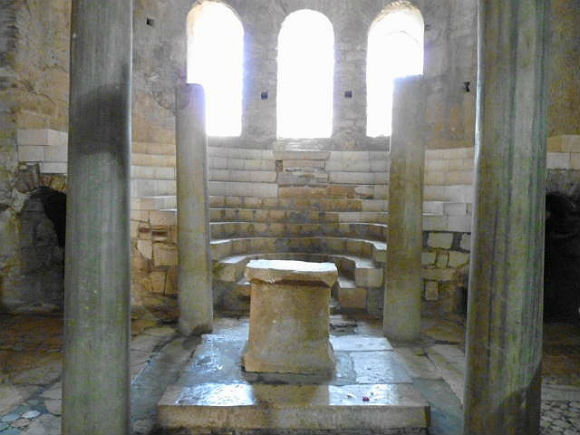The hometown of the man who inspired the legend of Santa Claus is a long way from the snow and arctic lights of the North Pole.
The land Saint Nicholas is originally from rarely sees snowflakes it is a village of palm trees and orange groves on the Mediterranean Sea in what is modern day Turkey. Nicholas, patron saint of sailors and children, lived and died there nearly 18 centuries ago.
The legend of the 4th century bishop who gave gifts to the poor has spread since the earliest days of Christianity.
Eventually, Saint Nicholas evolved from the bald and bearded man depicted in Orthodox icons dressed in long robes and clutching a bible to the more rotund and secular character of jolly old Saint Nick.
Though Santa Claus is today inextricably intertwined with Christmas, hardly any of the residents of Saint Nicholas’ hometown celebrate the holiday.
Demre is an overwhelmingly Muslim town where the call to prayer periodically echoes from minarets over the sun-bleached stones of chapels and a sprawling Roman amphitheater that was constructed long before the days of Saint Nicholas.
“Nobody celebrates Christmas here. It’s interesting,” said Baris Yuksel, speaking in his shop amid a sea of gold-framed icons of Saint Nicholas a man locals know here as “Noel Baba,” or Father Christmas.
Like many other residents of Demre, Yuksel grows and exports tomatoes from some of the many greenhouses that surround this small community.
But in recent years he has also made a lucrative business selling images of Demre’s most famous son to the hundreds of thousands foreign tourists who visit the Church of Saint Nicholas every year.
Demre’s gratitude is evident in the town’s official logo which features the familiar bearded face of Santa Claus and a bronze statue of a slimmer Saint Nicholas holding hands with two smiling children, which overlooks the central town square.
The man behind the legend is believed to have died in Demre in 343 AD, when the city was then known as Myra and many of the inhabitants spoke ancient Greek.
Nicholas is a real man. He lived here and he died here, and he talked about Christianity in a widespread area.
Nicholas of Myra was a Christian bishop, who is depicted in ancient engravings chopping down a tree that symbolizes the region’s earlier pagan Roman religion. He destroyed pagan temples also,” Cevik said, referring to the Temple of Artemis, which is believed to have been razed to the ground on Nicholas’ order. They destroyed the pagan buildings and then they used the materials of those buildings to build their churches.
A 12th century Byzantine chapel his team recently discovered buried next to the house of part of the floor of the chapel is constructed out of stones pillaged from the sarcophagi of earlier pagans.
Saint Nicholas was honored as a martyr. Christian priest named Nicholas of Sion, who lived in the area more than 100 years after Saint Nicholas’ death.
Christian believers began combining the stories of the two men named Nicholas. “After the 6th century AD, there are 2 Nicholases in one figure, “They come together and we know only one Saint Nicholas.”
In subsequent centuries, the tomb of Saint Nicholas became a place of pilgrimage for Christians traveling from around the Mediterranean Sea.
Gradually, other European cultures adopted the popular saint, and added their own twists to his image.
The Santa Claus we see today appears to have evolved out of a Scandinavian version of the saint, who was later popularized by 19th century American writers and U.S. companies like Coca Cola, which used Santa’s image to promote their products.
The mayor of Demre is a big fan of this contemporary Santa Claus, which some Turks refer to as the “Coca Cola Santa.”
“Indeed, he is something that the Americans invented,” said Mayor Suleyman Topcu, “[but] he is nice and colorful.”
But some of Demre’s younger residents want to set the record straight on their town’s most famous son.
No matter what version you believe in, everyone in Demre seems to agree it is the spirit of Saint Nicholas giving to those who are in need that is the legendary man’s most enduring legacy.
Demre,






The impressive statue outside is the first thing to hit you, then as you walk into the church itself the markings on the walls which some or discolored but you can still see them some of them faintly.
Then our guide took us through to look at the original floor well part of anyway, then we saw "St Nicholas" toom…
Entrance fee is 7 TL. If you are interested in Lycian history, it is worth visiting. The theater & other areas are being restored.
These ruins are stunning and in amazingly good condition. When we visited, there was hardly anyone about and we were able to enjoy the rock tombs and amphitheatre in peace and quiet. There is still restoration work ongoing, but it is already well worth a visit. Awesome!
One of the amazing place I ever seen. I celebrated my birthday last yer on there with Santa Claus (5th December) When you pass by Demre; also you need to see Myra too.
Very like petra in jordan only not as big. These tombs are curved on a mountain and are really amazing.
also visited the church where the real St Nichlos was buried. He was Turkish.
had a lovely lunch in a nearby eatery and the food was good and not expensive. Always eat where the locals eat and you will not…
The rock tombs, and the theater, are easily accessible, very close to the walkway, and well explained with signs in English. It's not hard to find this site, and it's not far off the main highway, nor from St. Nicholas Church. So if you are in the area I definitely recommend you visit. HOWEVER, be very careful about the parking…
We went to Myra by way of fairly undae roads but the trip was well worth it.
This was probably the best set of Ruins we saw in this area of Turkey.
The village of Myra also had the Basillica of St. Nicholas which was also very interesting to visit.
Definitely worthy of a visit if you are staying in…
We thought we should visit as we were near, but were disappointed. The entrance was through a market of pushy traders, we paid 14 TL entrance fee, had to stand aside for the rush of coach loads of noisy tourists on a mission to get the snapshot they wanted regardless of others and suffer the most disgusting toilet facilities we…
St Nicholas church is somewhat subterrainian as the main town of Demre now sits at a higher level than the church.
A place of pilgrimage for Russians, as their patron saint – the vast majority of visitors when we were there were Russian (I was wearing a maxi dress and covered my shoulders – but the Russians also cover their…
The ampitheater was in good shape and the rock tombs were also quite amazing. Of course I was mildly disappointed that we weren't able to explore the rock tombs. I understand the danger, or the fact that many tourists don't take enough care and ultimately might ruin it for others. I understand the idea is to preserve, but yet, you…